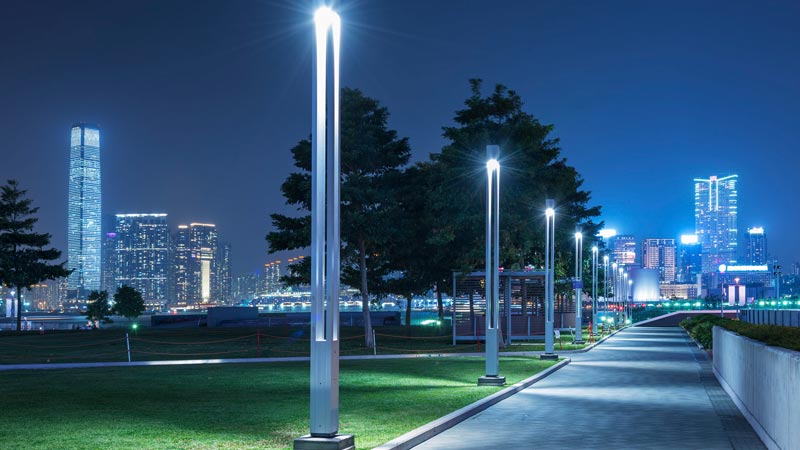
Why should smart street lighting be the first step in your smart city project?
The first step in creating smart cities is to replace incandescent street lights with LEDs, the most energy-efficient street lighting available. LEDs have various advantages, including lower CO2 emissions, lower energy usage, lower expenses, and a longer life span for street lighting. The best part is that you’ll see a return on your investment in just two years.
A smarter street lighting system allows you to manage the output of each light individually, such as brightening in high-crime areas or programming lights to respond to pedestrian or vehicle activity.
It also allows each light to be independently monitored and maintained, reducing the number of times personnel are sent out to physically check each bulb’s condition. Each bulb becomes an Internet of Things (IoT) ready installation platform, a plug-and-play IoT base acting as a catalyst for more smart city investment by connecting each pole to a larger network link. Bolt-on technologies such as CCTV cameras and advertising boards can be added to the network once a safe and secure link has been established via the lighting system, providing a range of benefits from public safety to advertising. Solar street lights can help municipalities meet their lighting demands. The high-quality solar street lights will improve the city’s appearance and feel. The initial cost may be higher, but there will be no outages or electricity bills, though. Because there would be no operational costs, residents will spend more time in the park and other public spaces. They can engage in their favorite activities under the stars without worrying about the electricity bill.
Additionally, lighting will reduce criminal activity and provide individuals with a better, safer atmosphere. One of the topics asked of companies and citizens during the city’s consultations was which aspects of lighting were most important to them. Safety, culture, and security all received good marks. Still, the most significant aspect, much to the surprise of many in the organization, was the economy, which 27% of respondents mentioned. When asked if IoT technology could enable the authority to send extra electricity back to the grid in the same way electric vehicles do, he concedes there probably wouldn’t be enough leftover energy to make it viable.
On the other hand, smart street lights can be controlled locally if they are connected. This means that the brightness of particular places can be reduced, or that only a few street lights can be turned on at a time, or that lights can be switched on and off at different hours depending on traffic and other circumstances. This, too, aids in reducing excessive power use. After a thorough lens cleaning, street lights become brighter. Cities can save a lot of money if the intensity of the light is automatically decreased after lens cleaning. Furthermore, once the light goes out or requires repair, the smart lighting system notifies the user, allowing maintenance to be completed on time without the need to engage engineers to inspect all of the lights.
If you are interested to know more about this,
Opt 4 and Luminexence will share with you the latest in Italian Design and Technology and how to start Your Smart City with Solar Design and Security!
Contact us at…..
